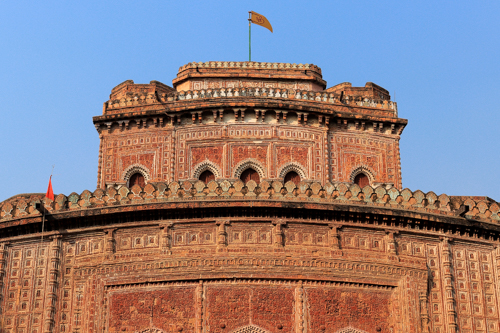
Kantanagar Temple (known locally as Kantajew Temple or Kantaji Temple) was one of the highlights of my trip to Bangladesh. It is located on the northern border between Bangladesh and India and the journey by car from Dhaka takes more than 1 day.
Despite the location, I included the place in my itinerary. The first reason was that a friend of mine who was working for Bangladesh’s tourism development once told me that the temple should be the next UNESCO World Heritage site to be registered in the country, for the high quality of the Hindu architecture that evolved in Bengal. Secondly, for a long time, I’ve just wanted to see, up close and real, a Hindu temple in the Nava-ratna style.
Beautiful countryside views on the roads to Kantanagar Temple
Despite of its fineness and magnificence, international tourists rarely visit Kantanagar temple due to its remote location from other key sightseeing destinations.
On the day, we left the hotel in Dinajpur in the morning and, went through many villages. The countryside views were just amazing and we passed by many people commuting for work. A lot of them said hello and assalam!
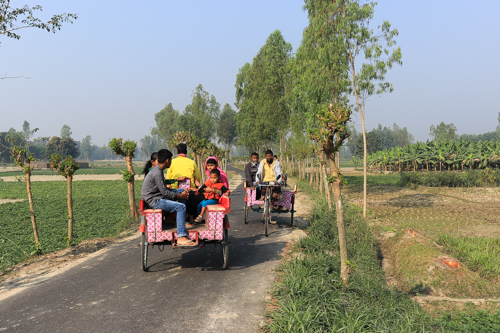
Getting closer to Kantanagar temple, the greenery of tobacco plantations dominated the views on both sides of the road.
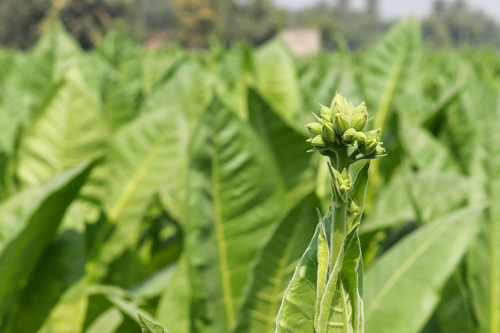
The magnificent terracotta temple with walls filled with fine and livery carvings
The temple suddenly emerges out of the extensive landscape of farming fields. It was totally different from all other temples in the country.
It’s a Hindu temple made of brick and terracotta, dating to the 18th century. It originally had nice spires across its three layers of terraces; however, these collapsed during an earthquake in 1897 and were never restored.
The design was apparently influenced by Islamic and Buddhist arts that were prevalent in the region. Its square body and beautiful arched top outlines, which seems to be unique to this region, makes you feel that you’re in Bengal now.
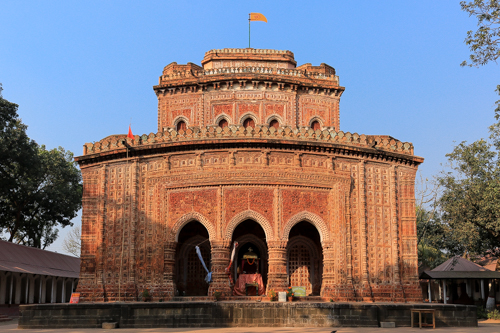
The surfaces of the four walls were completely covered in fine decorations.
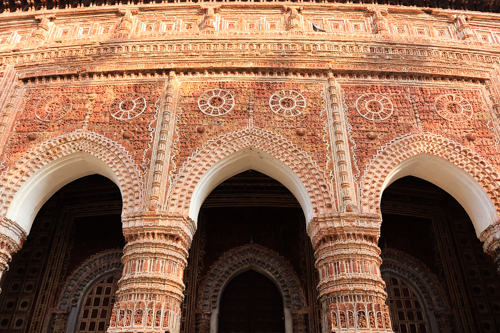
I was the only international traveler on that day. The visitor book showed that a British had been there three days before, and a solo Chinese traveler nine days before that.
However, there were many local Hindu pilgrims in the compound and many signs that they were there to worship, despite the fact that Hinduism is a minor religion in the country today.
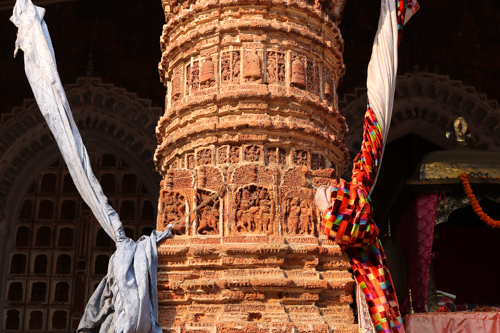
The carvings of the walls depict everything, from mythological stories such as that of Ramayana, to local domestic life and society. It was interesting to see the many marine ships depicted on the walls, indicating that this has been a riverine region since ancient times.
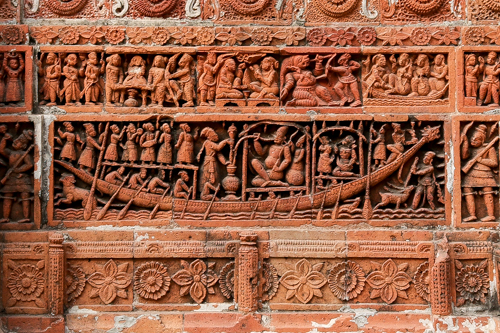
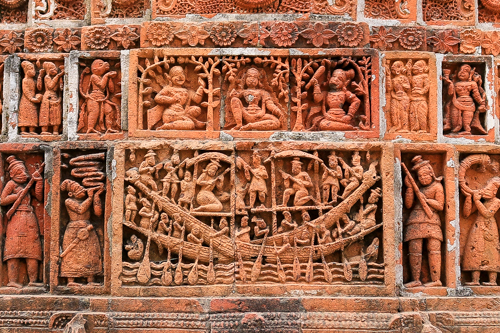
Another corner is fully covered in battle ships, hunting scenes or royal processions of elephants, horses, and camels with local people in Mughal dress. Other corners portray lively domestic scenes, such as wedding and festivals.
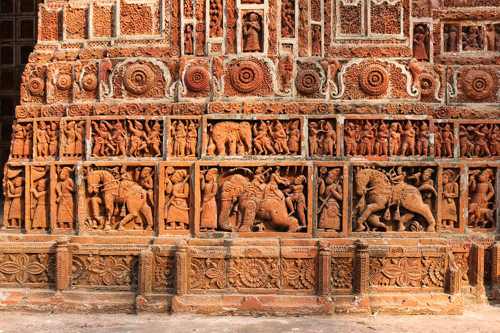
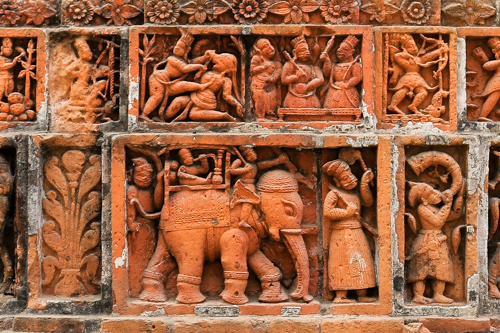
After spending a long time, appreciating all of the detail in the fascinating walls, I passed some more time outside of the compound, where pilgrims relax and chat at cafes after their worship.
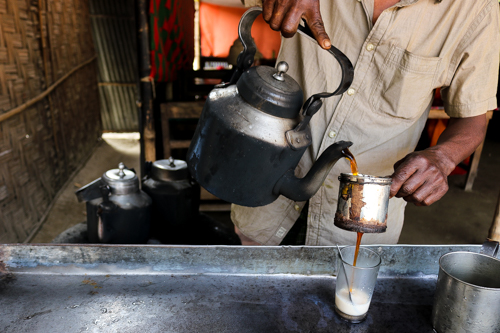
Access: I arrived in Dinajpur on the day before. The journey time from Dinajpur to Kantanagor Temple was 40-50 min by a car.
How long to spend there: 30-60 minutes, or more if you’re particularly interested in the regional architecture or religions.
Keyword: Hindu temple, Bengal architecture
